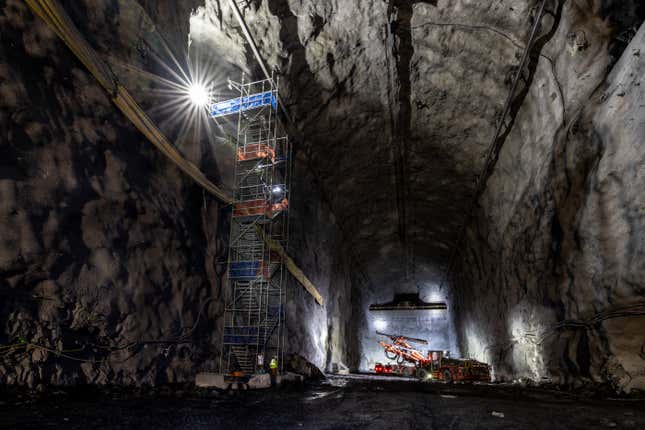You’re probably excited for DUNE—no, not that one. I’m talking about the Deep Underground Neutrino Experiment (DUNE), a mile below Lead, South Dakota, where three massive caverns have been excavated for the world’s latest search for the enigmatic particles.
About 100 trillion neutrinos pass through your body every second, according to the IceCube Neutrino Observatory. They are the lightest particles that have mass, and as far as we know are fundamental—they are not made up of any smaller building blocks, according to Fermilab.
Advertisement
DUNE is a project hosted by the Fermi National Accelerator Laboratory, or Fermilab. Its goal? To sniff out neutrinos—subatomic particles that only interact with normal matter via the weak nuclear force. Neutrinos could hold answers to some fundamental questions, like why our universe is composed of matter, or how black holes are born. They could offer clues about dark matter, an even more inscrutable type of mass whose existence is only known because of its gravitational interactions with ordinary matter.
But why did a neutrino search require the excavation of three massive caverns a mile (okay, really 4,850 feet) beneath the Earth’s surface? Well, neutrino detectors require substantial size, each one being about the size of a seven-story building. The detectors will each be filled with 17,000 tons of liquid argon, cooled to -229 degrees Fahrenheit (-184 degrees C), which the neutrinos interact with, allowing physicists to detect them.
Advertisement
Two of the DUNE caverns will house detectors and the third will house utilities for the detectors’ operation; the entire subterranean complex covers an area of about eight soccer fields.
Advertisement

Advertisement
According to IceCube’s website, it would take about 100 years for a neutrino to interact with a person-sized detector. That’s why neutrino detectors like IceCube (a cubic kilometer of ice in Antarctica) and DUNE are supersized—to enhance neutrino detectability, so that physicists don’t need to wait a century for a mere scrap of data.
Nearly 800,000 tons of rock were dug out of the caverns to create space for the detectors. The debris was brought to the surface and put in the Open Cut, an open-air former mining area. (Unfortunately, you are no longer allowed to hit golf balls into the Open Cut.) The DUNE team expects the first detector to be operational by 2029.
Advertisement
More: Physicists Detect Neutrinos for First Time Using Large Hadron Collider
Services Marketplace – Listings, Bookings & Reviews